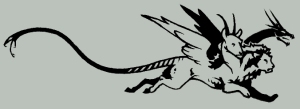Over the past couple of days, Brad has been feeling about the same, with a few small improvements—his skin continues to do a bit better and his eyes are less painful, but his GI symptoms continue—but today we got some news about new treatment options. Last night he had his new lenses inserted in his eyes. These are the prokera rings, which consist of a ring holding a small circle of amniotic membrane, which will apparently bond with and heal the damaged surface of his eyes. For right now he can hardly see anything, as the lens makes things very blurry, but we are told that will improve. He also says that they were quite uncomfortable at first, as they are bulkier than standard contact lenses. Truth be told, they also make his eyes look really odd (the irises look much bigger), but we will all get used to them, him especially, and it’s great that this option for a noninvasive treatment was available and was implemented so quickly.
The really stubborn ailment continues to be his GI tract GVHD (graft vs host disease), which is continuing to be painful and miserable. He’s now nearly two weeks in with that and despite being on very powerful immune suppressants and antidiarrheals, this form of GVHD is proving stubborn. Up until today, the only other line of defense we had heard about was giving him a tincture of opium, a measure that certainly sounded interesting, if a little olden-timey. But I was concerned about it making him even sleepier and more muddled than he already is, thanks to his painkillers.
Today, however, we learned that the medical team has a different trick up its sleeve: something called photopheresis. In this, some of his blood (about a liter an a half per treatment) will be removed from his body, with the white blood cells separated out, treated with a photosensitizing agent, and then irradiated. This slowly kills the T-cells of the new graft, providing a further immunosuppressive effect in addition to the immune suppression Brad is already receiving via drugs. The theory is that the slower-moving, impaired T-cells will thus be less likely to attack Brad’s gut, thus ameliorating the graft vs. host disease. Interestingly, this treatment was initially approved by the FDA for treating precisely the sort of rare cancer (cutaneous T-cell lymphoma) that Brad had. But the procedure is now used frequently for graft vs host disease. He will remain on the two immune suppressant medications, so they are throwing a lot of big guns at the problem.
The treatment itself shouldn’t cause a lot of side effects, and if it works well it can be done on an outpatient basis after Brad comes home—though that day seems like a very long time from now. He will have four weeks of twice weekly treatments. Brad was unhappy to learn that he will need a new (and bigger) kind of catheter, because the Hickman line he got for his transplant is not big enough for the procedure to be done efficiently. Venous catheters and their placement have been his least favorite part of all of his cancer treatment—but his anticipation has in each case been worse than the actual placement, so I hope this one will be the same.
We have been cautioned that progress with photopheresis is usually slow, so we can’t expect a quick turnaround on the GVHD. But at this point any real turnaround at all would be great.

Hang in there, Kate.
LikeLike
Medicine is amazing. You and Brad are so tough. Thank you for sharing these updates.
LikeLike
I still hope tincture of opium makes at least an honorary appearance somehow.
Of course, everyone would have to dress up Dickensian. Or thereabouts.
LikeLike